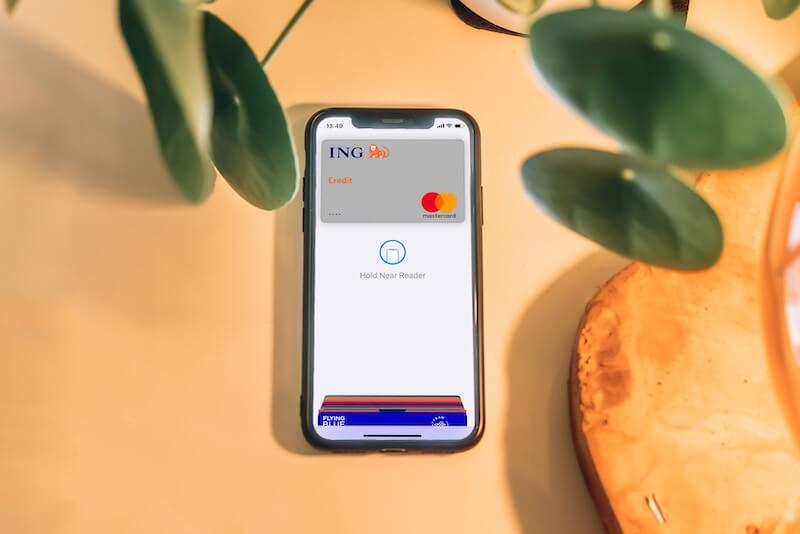
How to Create an Online Banking App: Tips from the Experts

Banking and fintech applications are growing increasingly popular with the widespread use of neobanks and the rapid digitalization of the finance industry. The question of how to create a banking app becomes a pressing one for financial institutions worldwide, and mobile banking app development becomes a lucrative venture for businesses worldwide. According to GlobeNewswire, the mobile banking market is expected to grow at a CAGR of 15% and reach $3,47 billion by 2030. Obviously, neobanks want a piece of that cake, and it is only natural that they continue to invest in the development of fintech apps.
Building a banking application, however, is a complicated task that requires strong industry and technology expertise. It involves several key steps to ensure its successful development and functionality. In this article, we are going to discuss the key steps in the mobile banking app development process and analyze the role of a strong technology partnership in the success of your project.
Discovery phase: Define the requirements to build a banking app
So, how to create a banking app? The process of developing a mobile banking application starts by gathering the requirements for the product. This involves understanding the purpose of the application, identifying target users, and determining the features and functionalities needed. Consider aspects such as user authentication, account management, transactions, security measures, reporting, and any specific requirements unique to the bank or region. The discovery phase can include several stages in its own right.
Design the application
Once the requirements are established, proceed to design the application. This includes creating wireframes, user interface (UI) design, and user experience (UX) design. Focus on designing an intuitive and user-friendly interface that provides a seamless experience for customers. At this point, you might start to think about the platforms too, like for instance, how to create banking applications on Android. All of these are important considerations for your fintech development team.
Plan the architecture
Determine the technical architecture of the banking application. This involves deciding on the programming languages, frameworks, and technologies to be used. Consider the scalability, security, and performance requirements of the application. Also, plan the database structure and decide on the appropriate backend and frontend technologies.
How to create a bank app: Backend Functionality
After the discovery phase, you can give the green light to the process of banking mobile app development. So, how to build a mobile banking app in the most efficient way? Begin by developing the backend of the application. This includes implementing server-side logic and database integration. Create the necessary APIs (Application Programming Interfaces) to handle user authentication, account management, transaction processing, and other functionalities. Ensure the backend code is secure and robust.
Implement frontend components
Develop the frontend components of the banking application using the appropriate web or mobile technologies. This involves coding the user interface and implementing features such as login screens, account dashboards, transaction forms, and other user-facing elements. Pay attention to responsiveness, accessibility, and compatibility across different devices and browsers. The process of banking mobile app development does not end with coding as there are several considerations to take:
- Integrate third-party services: Incorporate any required third-party services, such as payment gateways, identity verification services, or fraud detection systems. These integrations enable secure and seamless transactions, enhance security measures, and provide additional functionality to the banking application.
- Implement security measures: Security is crucial in a banking application. Implement robust security measures to protect user data and transactions. Utilize encryption techniques, secure communication protocols (e.g., HTTPS), and implement strong user authentication mechanisms (e.g., two-factor authentication) to prevent unauthorized access.
- Test the application: Conduct thorough testing to ensure the application functions as intended and meets the defined requirements. Perform unit testing, integration testing, and system testing to identify and fix any bugs or issues. Additionally, perform security testing and penetration testing to assess vulnerabilities and strengthen the application’s security.
Deploy and monitor: Creating a mobile banking app that stands the test of time
After your development team has coded and tested the app, there remains a question of how to create an online bank that delivers value in the long run. They will continue the process of mobile application development for banking in a production environment, following best practices for deployment and configuration management. The team will set up monitoring systems to track application performance, detect errors, and gather user feedback. Experts will regularly update and maintain the application to address any issues or add new features as required. When you build a banking app, you need to also consider the following aspects of its performance:
- Regulatory compliance: Ensure that the banking application complies with relevant regulatory standards and guidelines, such as data privacy regulations (e.g., GDPR) and financial regulations such as Know Your Client (KYC). Implement appropriate measures to protect customer data, maintain audit logs, and adhere to legal requirements.
- Continuous improvement: Continuously gather user feedback and analyze application metrics to identify areas of improvement. Regularly release updates and new features based on user needs and market trends. Stay updated with emerging technologies and security practices to enhance the application’s functionality and security over time.
How to build a banking app with a reliable partner
A reliable technology team proficient in the development of banking and fintech solutions plays a crucial role in building a successful banking application. They are responsible for implementing the technical aspects of the application and ensuring its reliability, security, and performance. Here are some key benefits of a reliable technology team in the development of a banking application:
- Technical expertise: A technology vendor like nCube will provide a deep understanding of the latest technologies, frameworks, and programming languages relevant to banking application development. They should have expertise in areas such as backend development, frontend development, database management, security protocols, and integration with third-party services. Basically, you want to work with people who know how to make a mobile banking app.
- Development and testing: Based on the design and architecture, the team develops the backend and frontend components of the banking application. They write clean, efficient, and maintainable code while following coding standards and best practices. The team conducts thorough testing to ensure the application functions as intended.
- Security measures implementation: Security is paramount in a banking application. The technology team implements robust security measures to protect user data, prevent unauthorized access, and secure transactions. They incorporate encryption techniques, authentication mechanisms, and adherence to security standards knowing how to make a banking app that is secure for banks and users alike.
- Deployment and maintenance: The team is responsible for deploying the application to a production environment and managing the deployment process. They ensure proper configuration management, version control, and release management practices. They also monitor the application’s performance, address any issues that arise, and release updates and patches as needed.
- Collaboration and communication: The technology team works closely with other stakeholders at your organization, such as business analysts, project managers, designers, and QA testers. They maintain effective communication channels to understand and address the requirements, provide regular progress updates, and collaborate to resolve any technical or functional challenges.
Final thoughts: How to create a bank app bound for success
Building a banking application is not an easy feat. It requires planning, strong technical expertise, and continuous work on improving the security of the product. That is why a strong technology team is a must for such a laborious project. Their technical expertise, collaboration skills, attention to security, and commitment to quality contribute to the development of a robust, secure, and user-friendly banking application that meets the needs of both the bank and its customers. Contact us for a skilled team in the fintech domain.
Recommended articles


